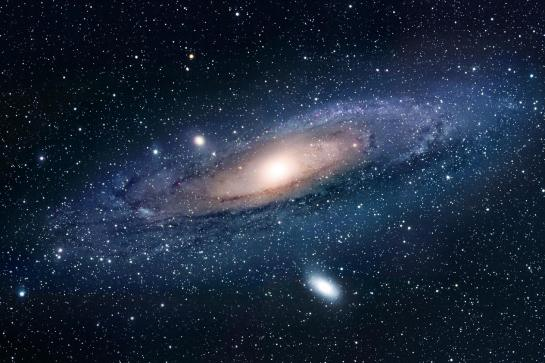
Ever wondered how airplanes fly? How do meteorologists predict whether the upcoming day be sunny or windy, or how do we get the prior reports of an approaching cyclone? Not yet?
Time to explore!
These predictions are all results of the development in space science. The word ‘space science’ evolved around the latter half of the 20th Century. ‘Space’ and its vastness have captivated people since the very beginning. Humans always had a desire to know more about the space and dive deeper into it. People studied the space and used their observations to draw out a concluding fact linked to religion and practical purposes. In the 17th Century, space science was merely confined to the Sun and the Moon, however, the 19TH Century started witnessing the collaborative stories of the historians and the novelists. The 20TH Century gave a boost to space science, there was an advancement of rockets and other ideas were practically realized.
Whenever we hear the word ‘space’, a sense of vastness fills our minds. ‘Space’ refers to the near-vacuum between different heavenly bodies while ‘Science’ refers to the study of any element taking into consideration its behavior and properties, thus, space science deals with the study of different phenomena associated with natural bodies taking place in outer space. It involves space exploration. It makes us look beyond our planet towards other planetary objects, towards the Sun, Moon and other heavenly bodies. It is described as the study of different phenomena occurring in outer space away from our planet Earth. Outer Space is not completely empty; rather a vacuum consisting of particles of low-density, plasma of helium and hydrogen as well as magnetic fields, dust and cosmic rays exists.
Astronomy

Astronomy is the branch of science that includes the study of ‘sun’, ‘moon’, ‘comets’, ‘galaxies’ and other heavenly bodies. It focuses on the behavior and properties of heavenly bodies. Phenomenon such as supernova, explosion, gamma ray bursts, cosmic microwave radiation too find place under the heading Astronomy. Astronomy deals with the development in meteorology, physics, chemistry and movement of heavenly bodies along with the development of Universe. It is one of the oldest sciences which helped people locate the position of stars and to detect the favorable time for plantation. Astronomy is further classified into two, namely, observational and theoretical astronomy. Observational Astronomy uses telescopes or cameras to detect heavenly bodies. Whereas on the other hand, Theoretical Astronomy uses computer models and mathematics to observe and predict the consequences.
Astrophysics

It is the study associated with the working of stars, planets and other heavenly bodies. It takes a minute look at how things in the Universe work. It uses physics to deal with how the universe works and how it initially started. It is further classified into- Observational Astrophysics and Theoretical Astrophysics. Observational Astrophysicists study the universe and explain the physics behind what they see. They use space telescopes to study Radio Astronomy, Optical Astronomy, Infrared Astronomy and Ultraviolet, X-rays and Gamma rays.Theoretical Astrophysicists use the details provided by observational physicists to apply mathematical tools to it and derive certain conclusions. The problems Astrophysicists investigate include Solar System evolution, Star formation, Galaxy evolution, Origination of Cosmic Rays and Universe evolution.
Planetary Science

It is the scientific study of planets along with their moons and the processes that form them. The study includes objects that vary in size from micrometeoroids to gas giants. It is aimed at determining the composition, formation and deriving their history. It was initially confined to earth science but now includes planetary geology, cosmochemistry, atmospheric science, oceanography, hydrology, theoretical planetary science, glaciology and exoplanetology.
Cosmology

The branch of science which deals with evolution, structure and space time relationship of the Universe is named as Cosmology. It is defined as “study of structure and changes in the present”. Modern cosmology includes the Big Bang theory which includes particle physics. The 20th Century claimed the Universe was confined to the Milky Way, since scientists could detect planets only up to Saturn and Stars, however, with the invention of the telescope it was gradually discovered that the Universe is vast and it has various elements that can be studied.
Stellar Astronomy

It is the study of how the Sun and the stars move. It also deals with their evolution and formation. It focuses on physical and chemical processes that make certain activities take place. Scientists face a lot of challenges when it comes to stellar astronomy. Most of the ancient civilizations developed techniques for recording and predicting the motions for agricultural and spiritual purposes. Stellar astronomy developed when the Greek astronomers started considering Star as the point around which other planets revolved. The Greek astronomers were successfully able to detect the size of the Sun and distance from the Earth. This gave a thrust to Space science and it started evolving with the passage of time. Aristotle laid down the physical understanding of the Sun and other stars. He described the Universe as a series of spheres with Earth at the center and other stars outside. Thus, the sun and the moon were thought not to change.
Space science has helped humans in numerous ways. Advancement in technology in terms of transportation, food habits, agricultural benefits are all results of technological developments in space science. Our lives would have been not so easy as it is today in the absence of space science development. Space science finds wide application in areas that include Navigation, Maritime, Mapping, Transportation, Urbanization, Surveying and Disaster Management.

Comments